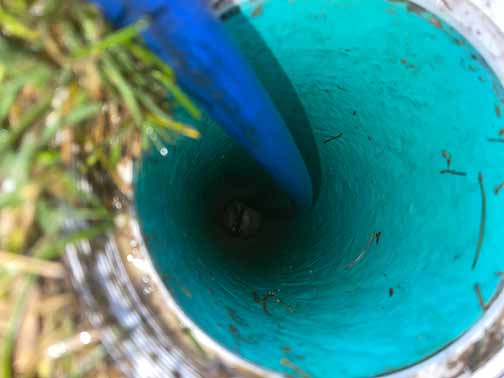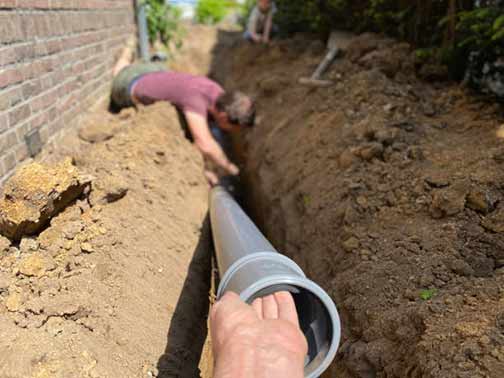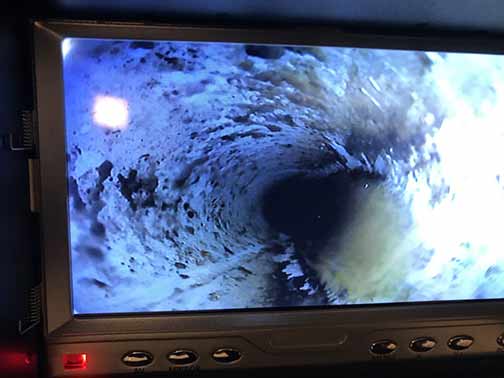Understanding the Threat of Tree Roots to Plumbing Lines
Trees are an integral part of a beautiful home’s landscape, providing shade, aesthetic appeal, and environmental benefits. However, their roots can pose a significant threat to your plumbing lines. Understanding how tree roots infiltrate and clog plumbing systems is crucial to preventing damage and ensuring the longevity of your drainage system.
Roots seek out moisture and nutrients, and unfortunately, your plumbing lines can be an attractive source for both. Even tiny cracks or weak points in pipes can allow roots to enter and grow, eventually causing blockages and potential pipe damage. Awareness of the issue enables proactive measures, saving you from costly repairs and maintaining the efficiency of your plumbing.
Identifying Warning Signs of Tree Root Invasion
Early detection can make a significant difference in managing and preventing extensive damage caused by tree root infiltration. Identifying the warning signs that roots are invading your plumbing lines is essential for timely intervention.
Common signs include slow drainage, gurgling noises from drains, frequent clogs, and unpleasant odors emanating from drains. If you consistently experience any of these issues, it could indicate that tree roots have penetrated your plumbing system. Visual inspection through professional means, like using a sewer camera, can confirm the presence of roots within the pipes.
Regular Plumbing Maintenance to Prevent Root Clogs
One of the most effective strategies to prevent tree roots from clogging your plumbing lines is regular maintenance. Routine inspections and cleaning ensure that any potential issues are addressed before they escalate. Engaging professional plumbers for periodic sewer camera inspections can help detect early signs of root intrusion.
Regularly scheduled hydro jetting can clear any roots starting to infiltrate the pipes. This high-pressure water jetting method not only removes clogs but also cleans the inner walls of the pipes, preventing debris buildup and future root growth. Consistent maintenance efforts ultimately protect your plumbing system’s integrity and functionality.

Selecting Root-Resistant Trees for Your Landscape
Choosing the right trees for your property can significantly reduce the risk of root-related plumbing issues. Opting for root-resistant or slow-growing tree species minimizes the likelihood of their roots causing clogs and damage.
Some trees are known for their less aggressive root systems, such as crape myrtle, dogwood, and Japanese maple. Consulting with a landscape professional or arborist can help you decide on species that will complement your garden while posing minimal risk to your drainage lines. Proper planning and selection can preserve both your landscape’s beauty and your plumbing system’s health.
Creating Barriers to Protect Plumbing Lines from Tree Roots
Another effective measure to keep tree roots at bay is the installation of physical barriers between your trees and plumbing lines. These barriers can prevent roots from reaching and damaging the pipes.
Materials such as metal or plastic can be used to create barriers that are buried vertically in the ground along the path of the pipes. A depth of approximately 18 to 24 inches is often sufficient to block roots from growing towards the plumbing lines. Geo-textile fabric impregnated with chemicals is another option that discourages root growth without harming the trees. Implementing these barriers adds an extra layer of protection to your plumbing system.
Employing Chemical Treatments to Deter Root Growth
Chemical treatments can be utilized to hinder root growth in areas close to your plumbing lines. Copper sulfate and foaming root killers are among the common options available to homeowners and professionals.
These products, when properly applied, create an inhospitable environment for roots, preventing their encroachment into pipes. However, it is crucial to follow manufacturer instructions carefully and consider any potential environmental impacts of using chemical treatments. Regular applications, as recommended, can effectively protect your plumbing system from root intrusion.

Understanding the Role of Plumbing Line Placement
The location of your plumbing lines can significantly influence the likelihood of root-related issues. Strategically placing new plumbing lines away from large trees and areas with densely planted shrubs can prevent future problems.
When constructing a new home or renovating your landscape, speak with both plumbing and landscape experts to ensure optimal placement of pipes. Adequate distance between pipes and trees, typically at least ten feet, reduces the chances of roots infiltrating and causing damage. Thoughtful planning during the installation phase can prevent costly sewer line repairs and maintain the efficiency of your plumbing system for years to come.
Managing Existing Tree Roots Near Plumbing Lines
If trees with potentially invasive roots are already present near your plumbing lines, careful management is necessary to prevent damage. Trimming and maintaining the roots can help minimize their growth towards the pipes.
Professional arborists can perform root pruning, ensuring it is done correctly without compromising the health of the tree. Root pruning involves selectively cutting roots that are growing towards your plumbing lines, redirecting their growth away from the pipes. Regular monitoring and maintenance ensure the roots remain at a safe distance, protecting your plumbing system from potential clogs and damage.
Utilizing Advanced Plumbing Techniques for Root Removal
In cases where tree roots have already infiltrated and clogged your plumbing lines, advanced plumbing techniques are necessary to address the issue effectively. Methods such as hydro jetting, mechanical augers, and rooter services can remove the roots and restore proper drainage.
Hydro jetting utilizes high-pressure water streams to clear roots and debris, effectively cleaning the pipes from within. Mechanical augers, also known as sewer rodding machines, can cut through roots and remove blockages. Professional rooter services often combine different techniques for optimal results. Engaging experienced plumbers ensures the problem is thoroughly addressed, restoring your plumbing system’s functionality and preventing future clogs.

Regular Inspections and Monitoring for Long-Term Prevention
Maintaining a proactive approach through regular inspections and monitoring is crucial for long-term prevention of tree root-related plumbing issues. Scheduling periodic camera inspections of your sewer line with professional plumbers helps identify any early signs of root infiltration.
Using sewer cameras for non-invasive inspections allows for thorough examination of the pipes, detecting potential problems before they escalate. Developing a maintenance schedule that includes these inspections ensures your plumbing system remains free from root-related clogs and damage. Consistent vigilance and prompt action are key to protecting your drainage lines and maintaining their efficiency.
Balancing Landscape Aesthetics with Plumbing Safety
Achieving a harmonious balance between your landscape’s aesthetics and plumbing safety requires thoughtful planning and ongoing maintenance. Selecting suitable tree species, strategically placing them, and implementing preventive measures can protect your plumbing lines without compromising the beauty of your garden.
Regularly maintain and prune trees to manage their root growth effectively. Stay informed about best practices for preventing root-related clogs and invest in professional services when necessary. By taking these steps, you can enjoy a lush, attractive landscape while ensuring your plumbing system’s longevity and functionality.
Conclusion: Proactive Measures for a Root-Free Plumbing System
Tree roots can pose a significant threat to your plumbing lines, but with proactive measures and regular maintenance, you can prevent clogs and damage. Understanding the risks, identifying warning signs, and employing preventive strategies are crucial for protecting your drainage system.
Choose root-resistant trees, utilize barriers, and consider chemical treatments to deter root growth. Regular inspections and advanced plumbing techniques can address existing issues effectively. By balancing landscape aesthetics with plumbing safety and adopting a proactive approach, you can enjoy a beautiful garden and a functional, root-free plumbing system for years to come.

